I am embarking on a completely home brew 40M crystal locked TX project, not because I need to, but just for the hell of it. I have made many projects like this before, but this time I am going to make the TX “Ugly style” on proto board. So far, the TX oscillator is built and works well.
See attached image of the Colpitts oscillator

Once up and running, I did some testing, and found that the oscillator ran nicely from 3.3VDC through to 13.8VDC.
The circuit uses a BC547 transistor, and a 7.040MHz fundamental cut crystal.
Here is a picture of the output as measured on my oscilloscope
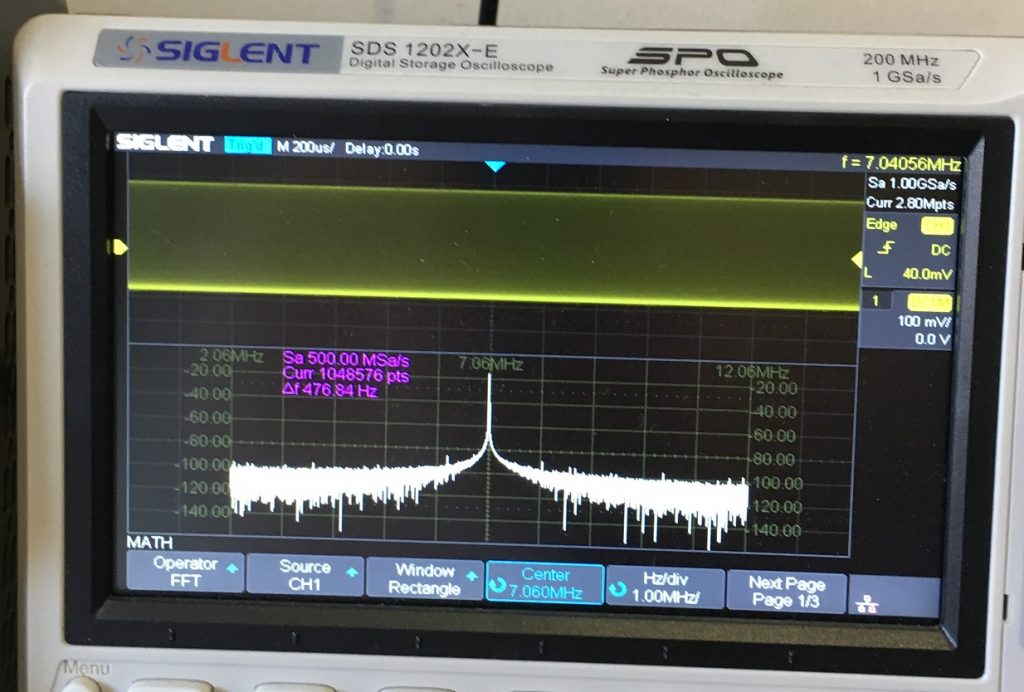
Below is a photo of the TX now, after having added a buffer and a first amplifier stage. The unit now outputs a couple of volts into a 50 ohm load. I did replace the oscillator transistor, which was a BC547 with a 2N3904. All transistors are now 2N3904.
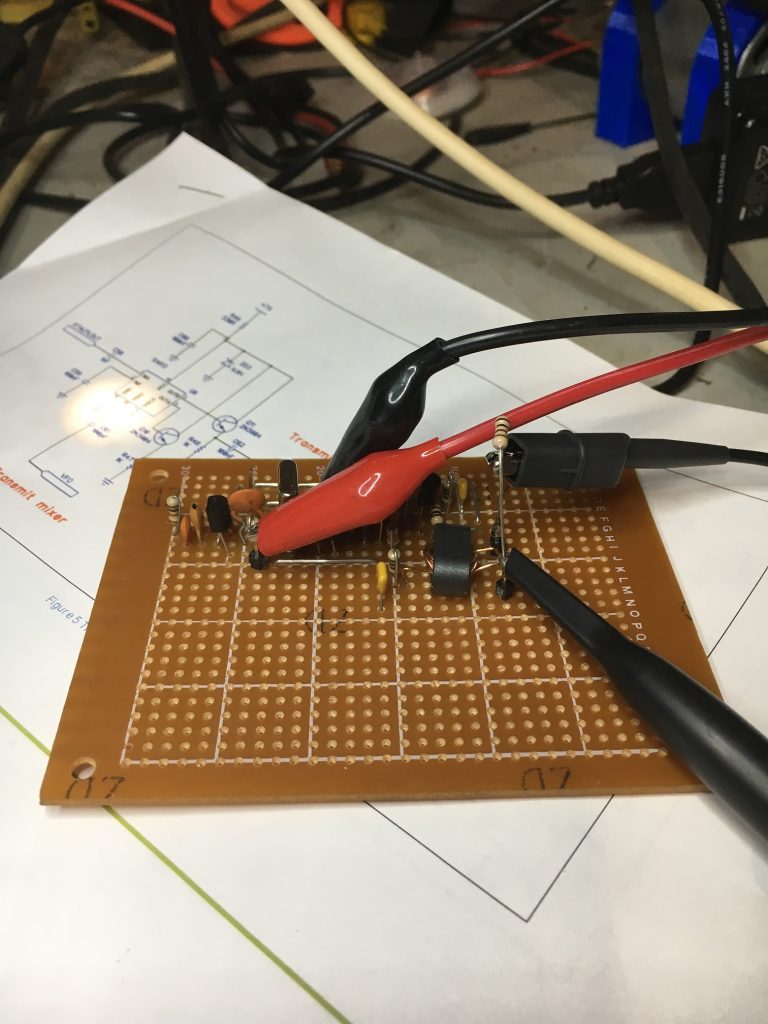
The proto board is fast becoming crowded! I have built the driver and the final stages, which are BD139 in class A. Since this unit is using a fundamental cut crystal oscillator and no mixing is taking place at the low level, a bandpass filter that might normally follow the oscillator was not required. The unit will definitely need a low pass filter though!
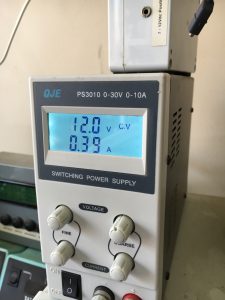
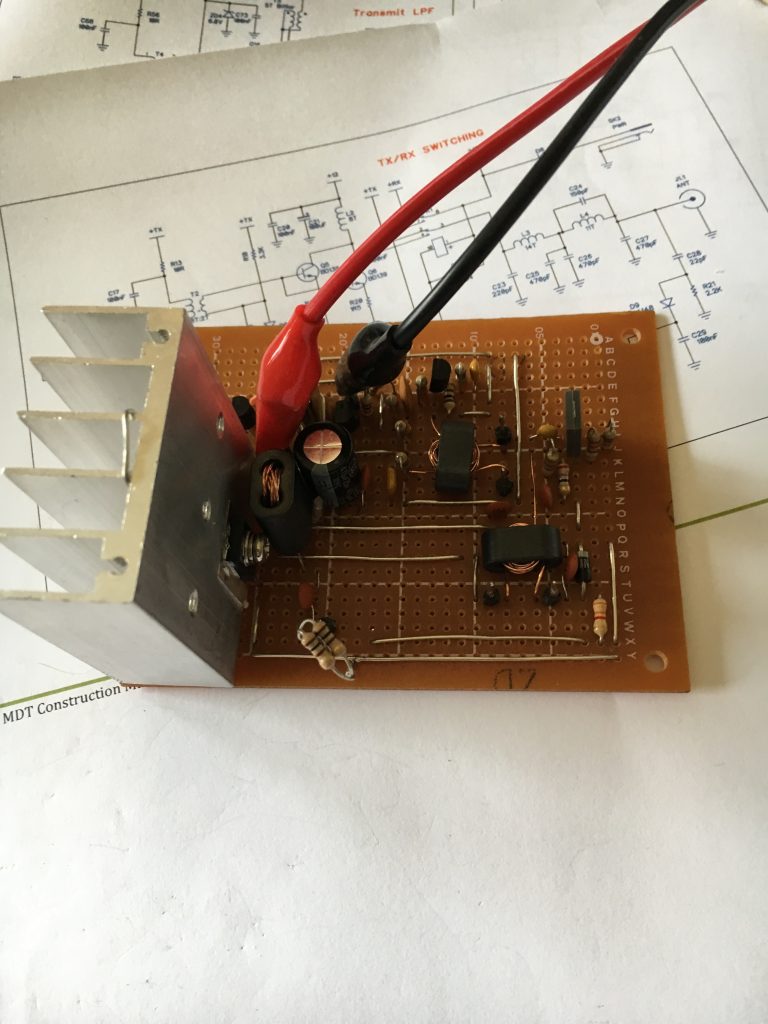
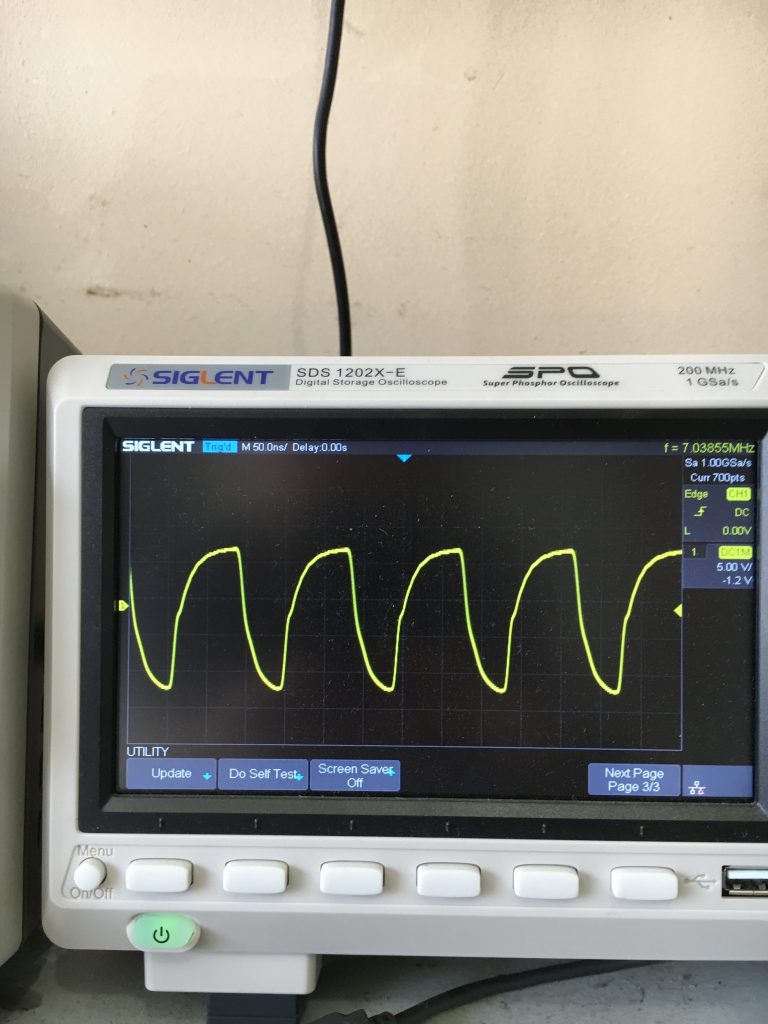
…and here is the circuit!!
40M QRP (This is a MS WORD file)
If I choose to turn this into an AM TX, then I will use high level modulation.
Please note that there is NO LPF attached to the output – this is why the output waveform is not a clean sine wave.
Below is a picture of the transmitter with the LPF attached – see the difference in the output waveform!
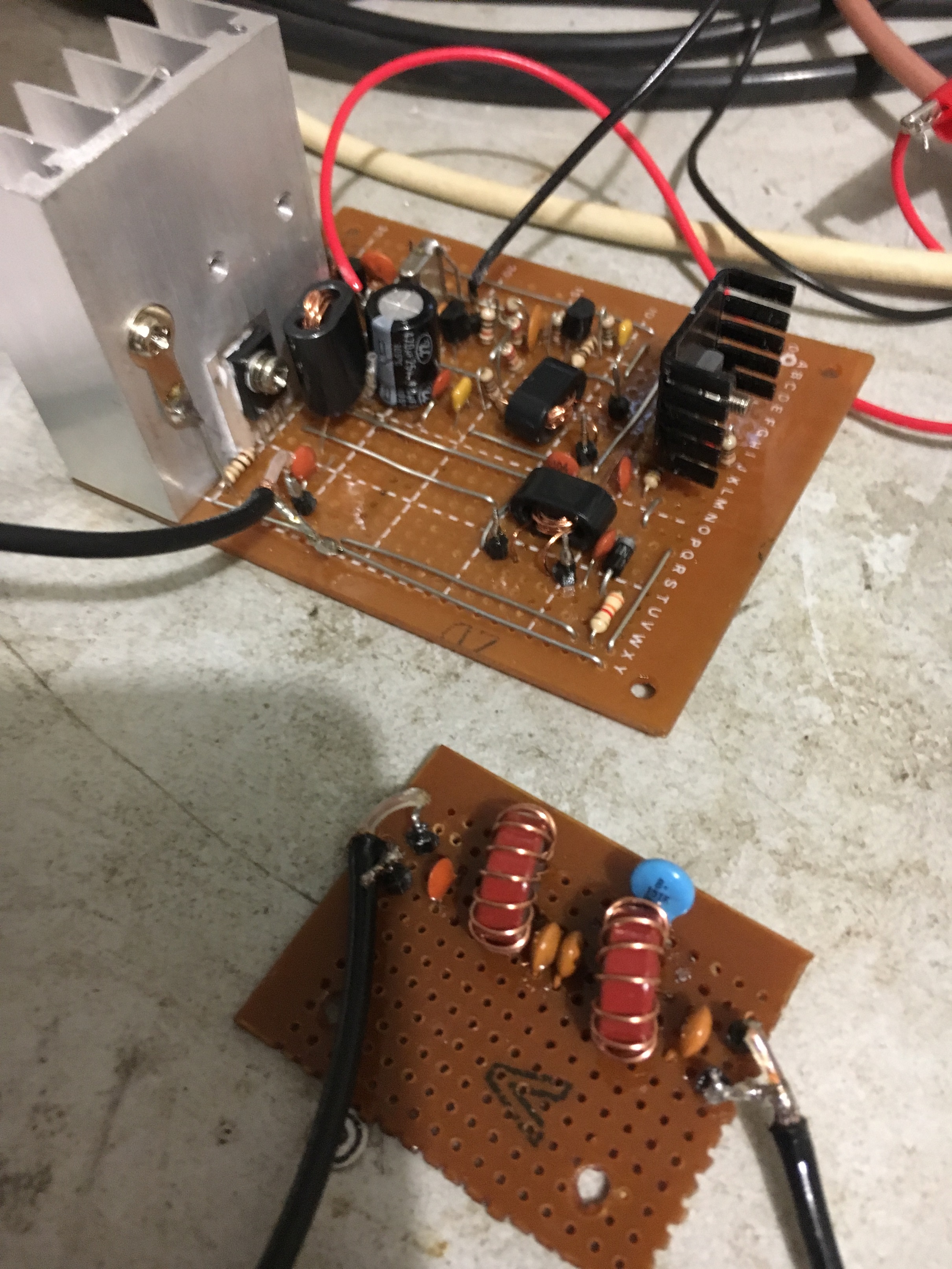
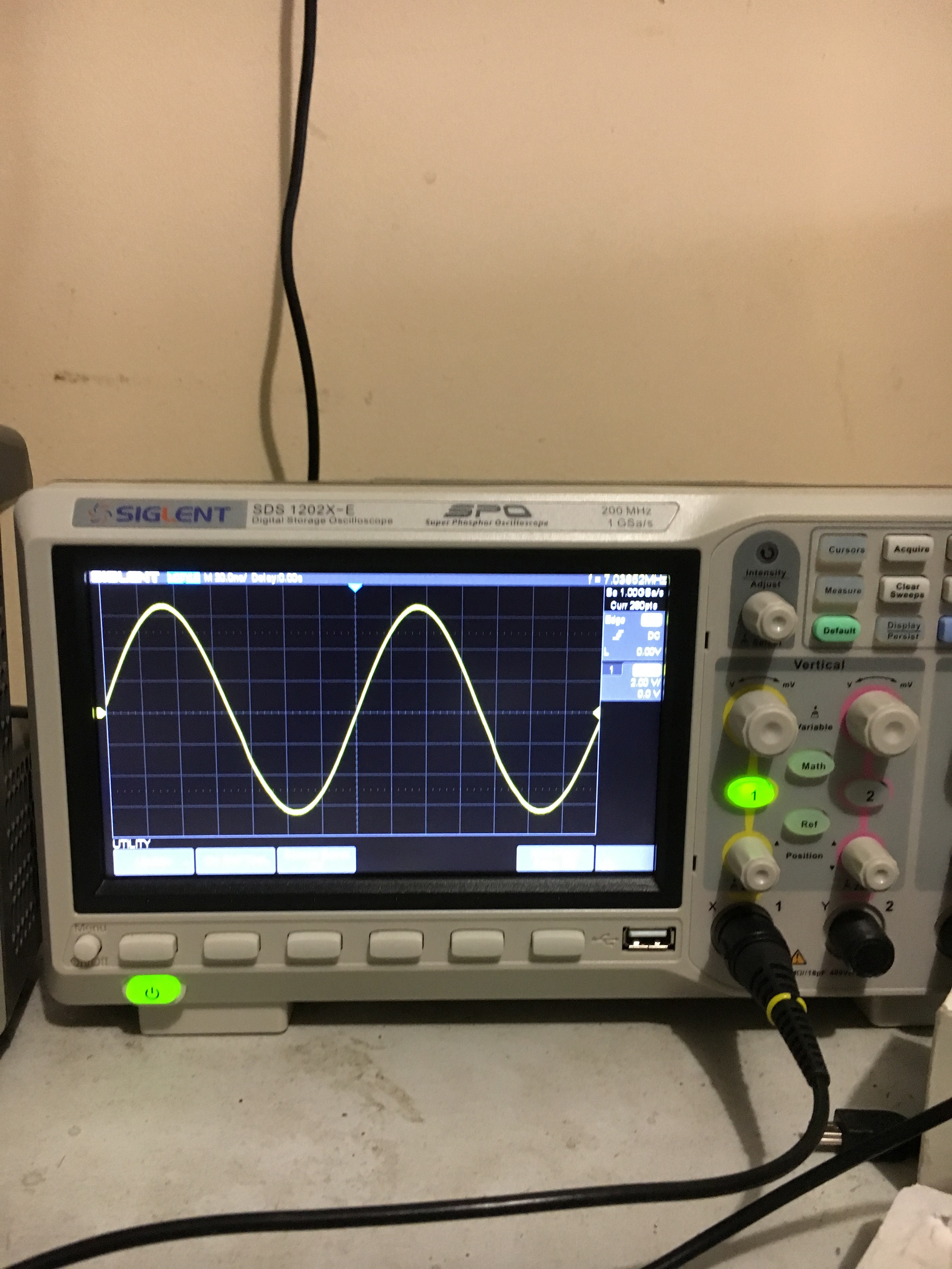
I would call this project a success, except that I messed up with the board layout, being that when I turn the supply up to 12V, and get just over 31dBm output, the TX begins to self oscillate, causing unwanted spurious output. This is because I placed the final amplifier stage too close to the Colpitts oscillator, and feedback starts to occur. It just goes to show how cautious you have to be when building your own gear. I will try moving the PA stage “Off the board” to see how I go then. I’ll post comments on to this page once I am done.
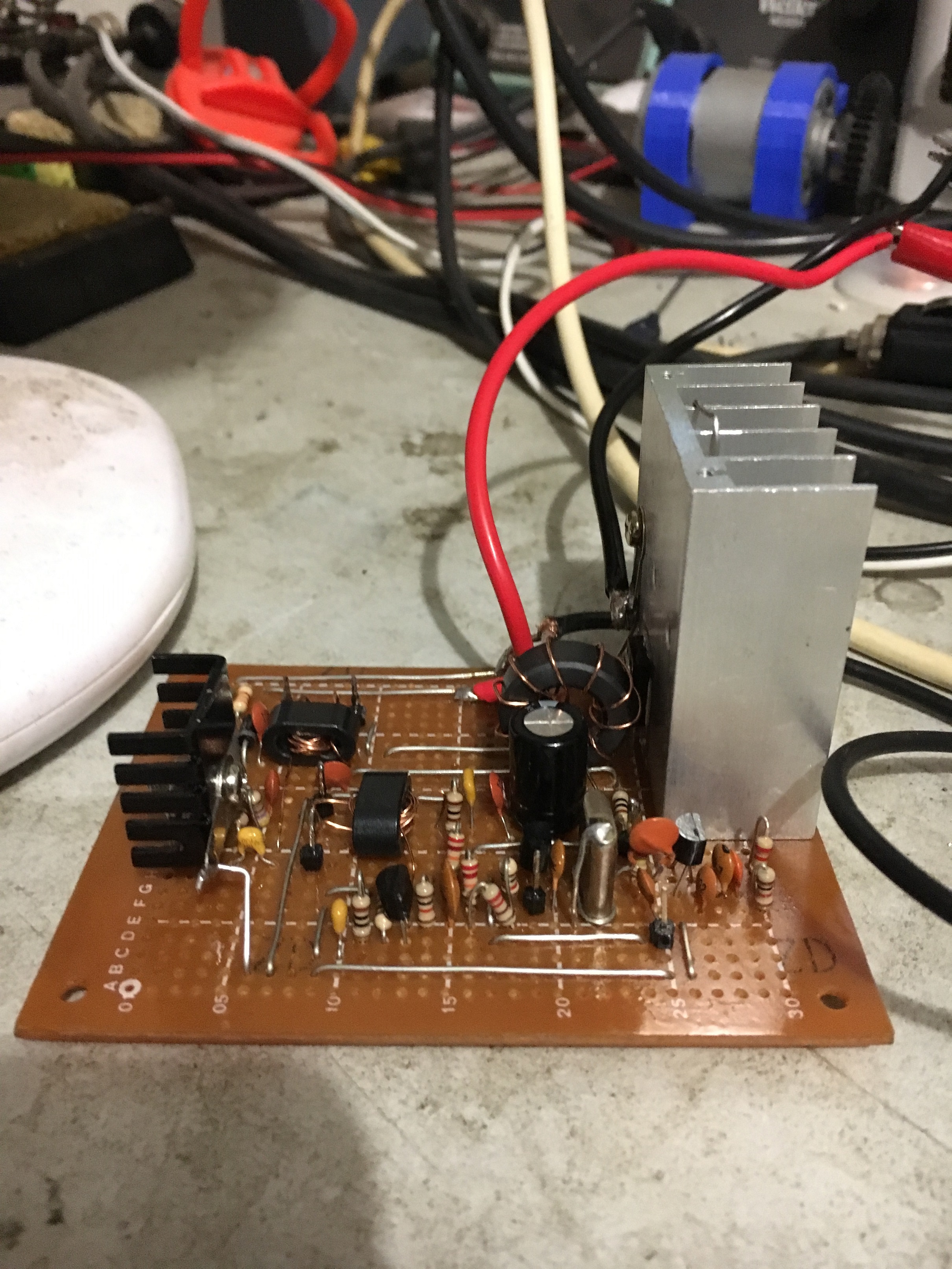
And it is fixed! All I had to do was replace the bifilar choke on the binocular core with a toroidal choke of 8 turns (and oriented 90 Deg from the original choke) and all is well now! Toroids are very private creatures and like to keep their RF to themselves for the most part – thus curing the RF feedback 🙂
UPDATE-
I have designed and had made a number of PCB’s for this project, and I have just built the first unit up, and it is more efficient and stable than the proto-board version. It still requires a low pass filter for eliminating harmonics, but it works well!
Here is the finished product (I will make the cad files available soon – for free because Amateur Radio is a hobby that is about learning, and not about making money!)
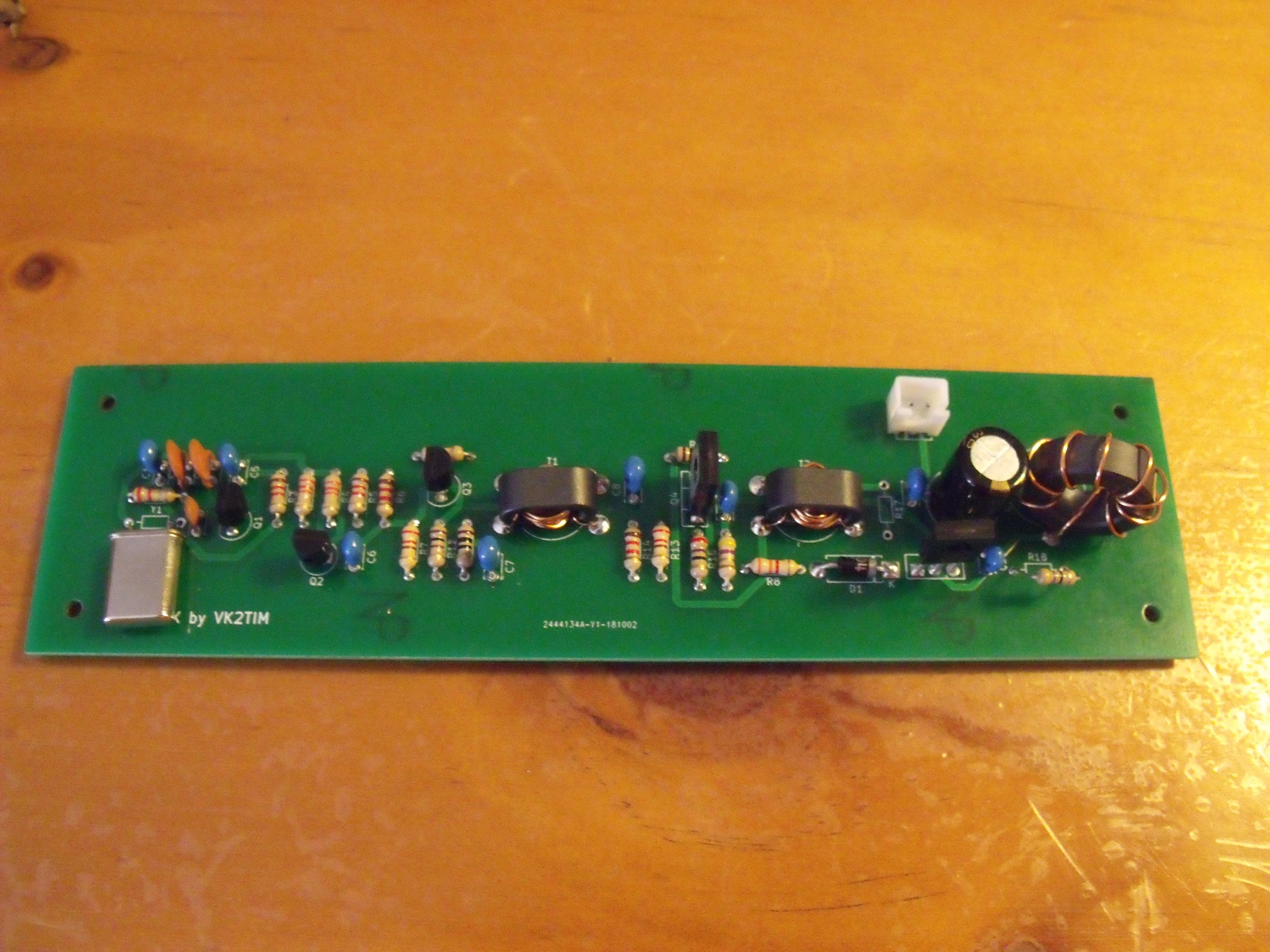
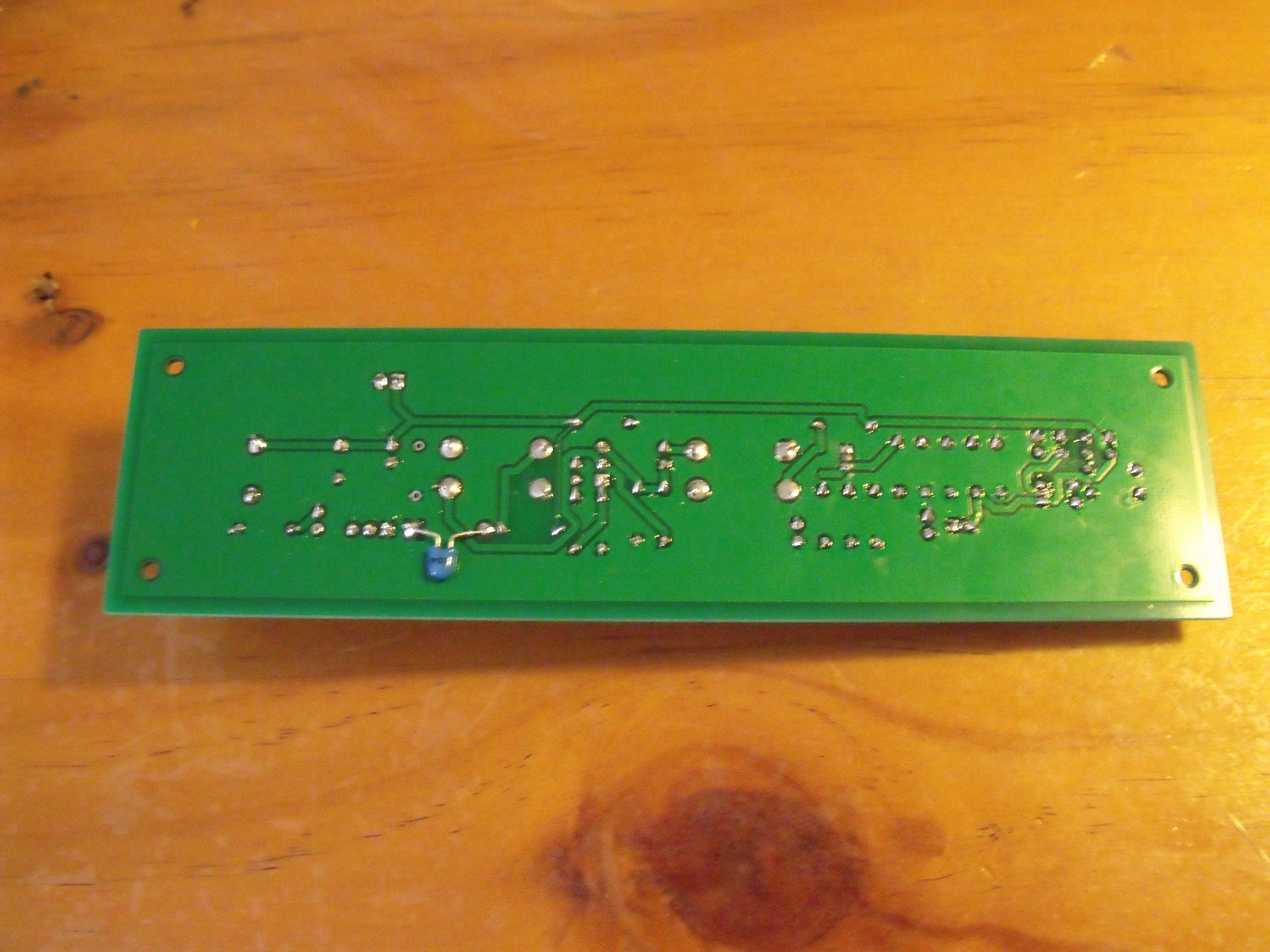
I just tested the PCB version of this transmitter at work, and it produces just over 3W @ 12V dc input. The output is clipped, but that is what filtering is for. I might experiment with reducing the drive level from the oscillator, but as it is, with appropriate filtering, it will be fine to use.
Below is the link to the ZIP file that contains all of the KiCad 5.0 files for this project. Just unzip them into your KiCad projects folder and open the project. Feel free to add adjust and modify, as long as you acknowledge where it came from.
73 and keep building!
VK2TIM.